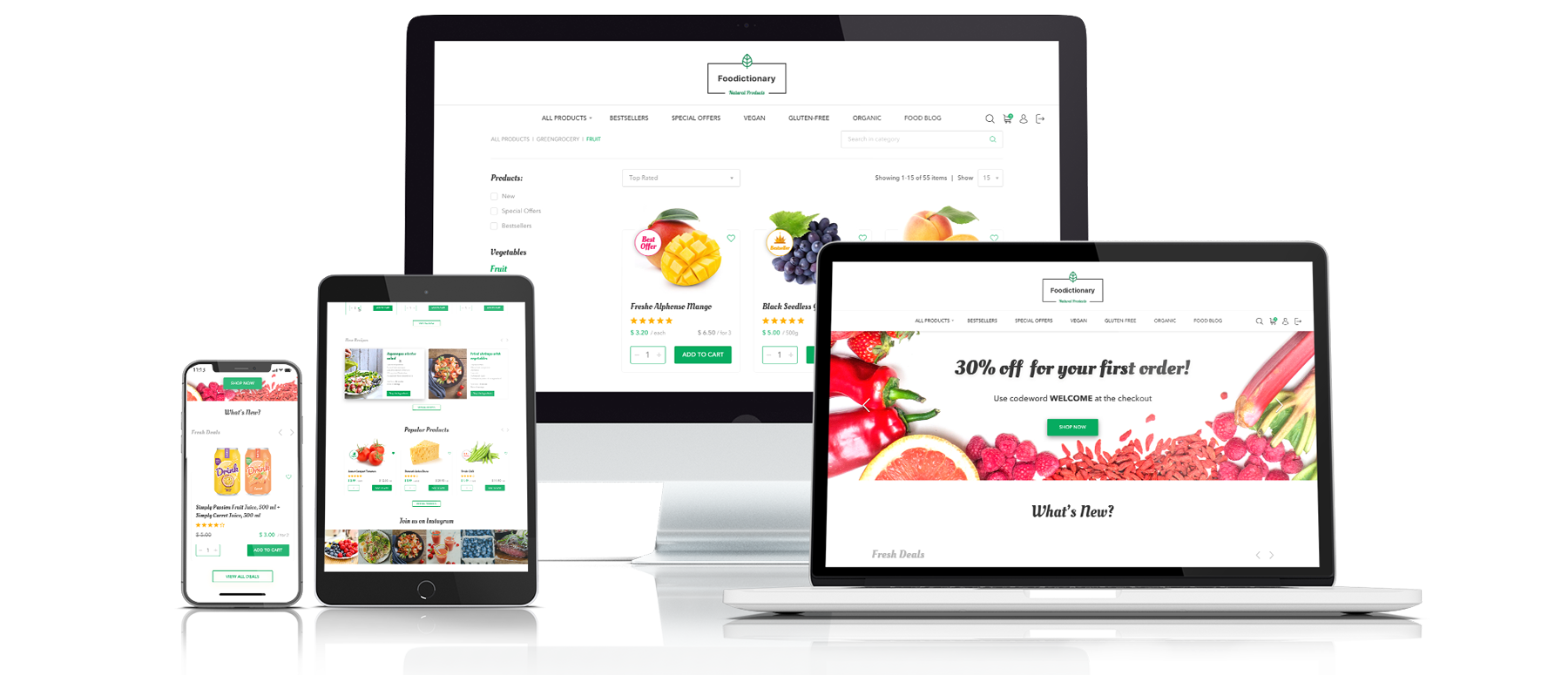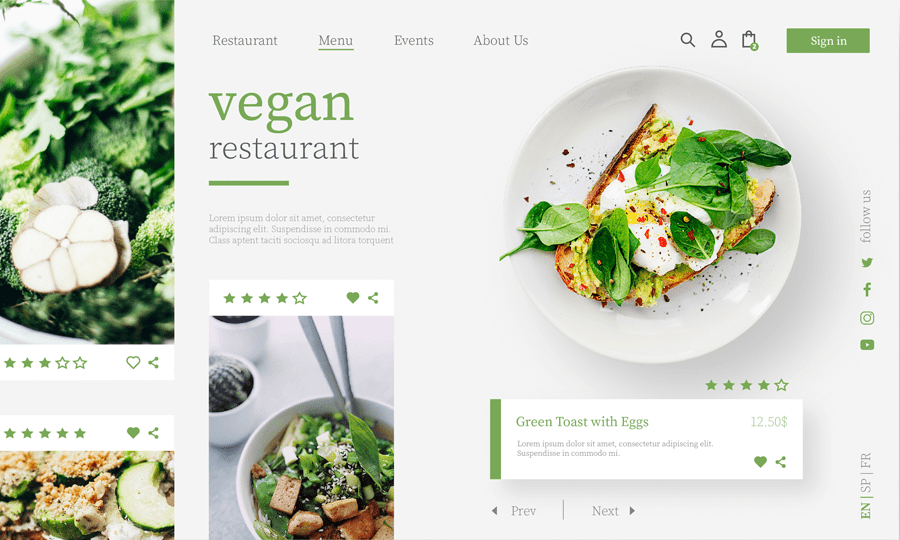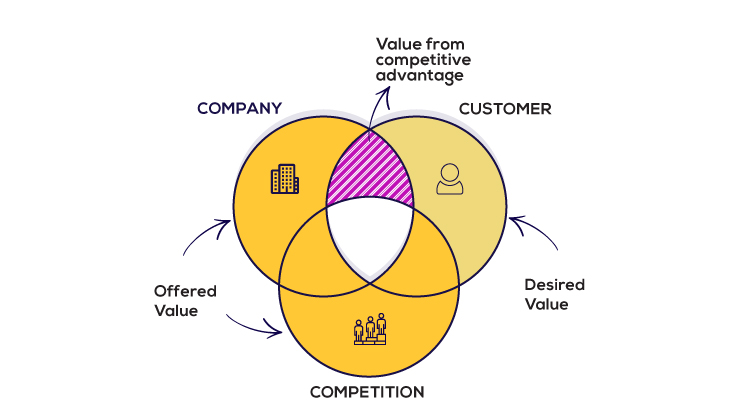
As the restaurant industry is gradually becoming more competitive, having a strong online presence is very crucial for succeeding today. E-commerce web development helps restaurants to establish a robust digital platform that enables customers to browse menus conveniently, place online orders, make reservations, and engage with the restaurant’s brand. It not only benefits in enhancing customer experience but also paves the way to new revenue streams.
4 Significant reasons of E-commerce Web Development for Restaurants
Restaurant-specific e-commerce web development comes with a number of noteworthy benefits, including:

1. Expanded Reach
With the use of an e-commerce website, restaurants are able to reach customers outside of their immediate vicinity. This enables businesses to draw clients from nearby regions and even tourists passing through.
2. Ease and Accessibility
Restaurants provide customers the ease of placing orders or reserving tables from the comfort of their homes or while on the go by integrating online ordering and reservation systems. This accessibility encourages patron loyalty and happiness.


3. Operational Efficiency
E-commerce platforms for restaurants frequently include backend administration systems that automate a number of operational processes, including order tracking, inventory management, and menu revisions. Better efficiency and customer service result from this.
4. Marketing and advertising possibilities
Restaurants can use e-commerce websites as a potent marketing tool. They can display daily deals, promotions, loyalty plans, and client testimonials to increase brand awareness and persuade customers to patronize their business rather than a rival’s.

6 Key Elements of E-commerce Web Development for Restaurants

Developing a successful e-commerce website for restaurants involves incorporating several key elements
1. User-Friendly Interface and Navigation
Creating a visually appealing and intuitive interface is crucial to ensure a seamless browsing experience for visitors. Clear and easily navigable menus, prominent call-to-action buttons, and simple checkout processes are essential to enhance user satisfaction.
2. Online Ordering and Reservation System
Integrating a secure and efficient online ordering system enables customers to easily place food orders or make reservations. This feature should include customizable menu options, special requests, delivery or pickup options, and secure payment gateways.
3. Mobile Optimization
The e-commerce website must be modified for mobile platforms as there is a high rising popularity of mobile device consumption. Responsive design ensures that the website adapts and functions seamlessly across various screen resolutions and devices, delivering a consistent and user-friendly experience.
4. Menu Management and Updates
Restaurants should be able to quickly change their menus, add or remove products, and simply handle descriptions and prices. A system that manages the content and enables real-time management of online menus can be utilized by restaurant operators to achieve this goal. As such content management systems (CMS) are a good option. Customers are kept current by being informed about newly added items thanks to this.
5. Integration with Third-Party Services
To improve the client experience, integrating third-party services into their systems as per the need can be a good option for E-commerce websites. This involves collaborating with delivery aggregators, online payment processors, platforms for collecting customer feedback, and loyalty schemes.
6. Visual Content and Engaging Imagery
High-quality pictures of the food, the setting of the restaurant, and the personnel inspire customers to learn more about the menu. In marketing and creating an emotional connection with potential clients, visual content is crucial.
5 Benefits of E-commerce Web Development for Restaurants

Restaurants that invest in e-commerce web development can reap several benefits

Increased Revenue
E-commerce platforms give restaurants the ability to capitalize on the expanding trend of online meal ordering and delivery, creating new revenue streams aside from dine-in clients.

Personalized online experiences
Personalised online experiences, customer profiles, and targeted promotions help restaurants develop a base of devoted patrons and long-lasting relationships.

Improved Operational Efficiency
E-commerce platforms streamline operations, reducing manual errors in order taking and minimizing phone inquiries. This allows staff to focus more on food preparation and customer service.

Competitive Advantage
By choosing e-commerce, restaurants may differentiate themselves from other companies and position themselves as forward-thinking, target customer-focused organisations.

Data-driven Insights
E-commerce websites provide valuable data and analytics, including customer preferences, order history, and feedback. These insights can inform business decisions, menu updates, and targeted marketing strategies.
Conclusion
E-commerce web development is more essential than ever for restaurants looking to thrive in the modern world. By implementing user-friendly and responsive interfaces, online ordering, mobile optimisations, and attractive graphics, restaurants may increase their clientele, increase sales, and streamline their operations. By implementing e-commerce technology, restaurants may stay ahead of the competition, satisfy evolving customer expectations, and improve their online presence.
FAQs
What is e-commerce web development for restaurants?
A digital platform that enables clients to effortlessly purchase food, make bookings, and interact with the restaurant’s brand online is created through e-commerce web development for restaurants.
How does e-commerce web development benefit restaurants?
A E-commerce web development boosts a restaurant’s online presence, broadens its audience, enhances consumer convenience, streamlines business processes, and offers marketing opportunities.
What key elements are involved in e-commerce web development for restaurants?
User-friendly interfaces, online ordering and reservation systems, mobile optimization’s, menu administration, connectivity with third-party services, and visually appealing content are important components.
How does e-commerce web development contribute to increased revenue for restaurants?
A E-commerce platforms enable restaurants to tap into online ordering and food delivery trends, generating additional revenue streams beyond traditional dine-in customers.
What benefits do restaurants gain from investing in e-commerce web development?
A Restaurants gain from greater sales, improved client interaction, operational efficiency improvements, data-driven insights, and a market advantage.
